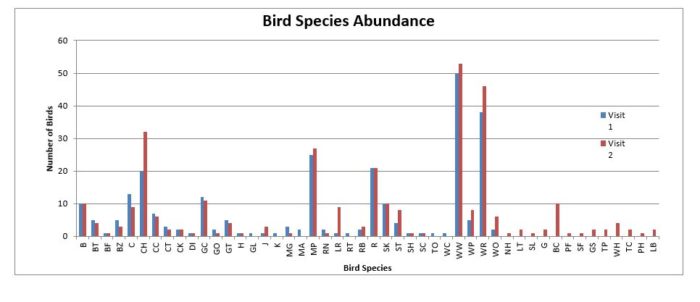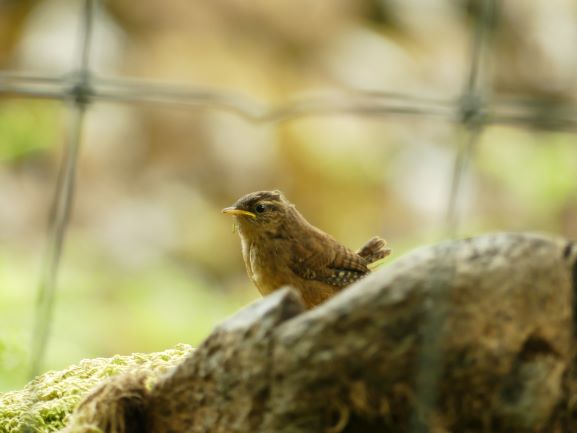Breeding Bird Survey: Methods and Overview
Breeding bird surveys monitor the abundance and diversity of bird species during the spring in the UK and are used to monitor population trends. The breeding bird survey at Hardknott has two aims: to find which species are present and what habitats they utilise. This summary covers the initial results for species abundance.
The survey method used was adapted from the British Trust for Ornithology’s Breeding Bird Survey method. The number of individual birds was recoded along three transects arranged to cover the majority of habitats across the site on two occasions, an early spring visit and a late spring visit. Birds were identified by sight and song or call. A total of 260 birds were observed from 35 species on the first visit and 318 birds from 42 species on the second visit. A total of 48 species were recorded over the two visits.
 Corresponding species codes can be viewed here: BTO bird species codes
Corresponding species codes can be viewed here: BTO bird species codes
The most abundant species were willow warbler, wren, chaffinch, meadow pipit and robin. This result is unsurprising as apart from meadow pipits, these are generalist woodland bird species found in a broad range of wooded habitats. Meadow pipits are open moor and grassland birds which is plentiful at Hardknott.
The remaining diversity of bird species present at Hardknott is presumably due to the variety of habitats present, which the second part of the survey addresses. By comparing the bird species found in areas of different tree species, densities and heights (compiled from our phase 1 habitat survey) we hope to gain a better understanding of how birds utilise this variety. This is of particular interest as habitats change in distribution, with native trees spreading and removal of plantation blocks and softwood regeneration. Repeating the survey annually would allow a longitudinal approach to understanding how changes in tree cover affect bird species abundance and diversity at Hardknott.

